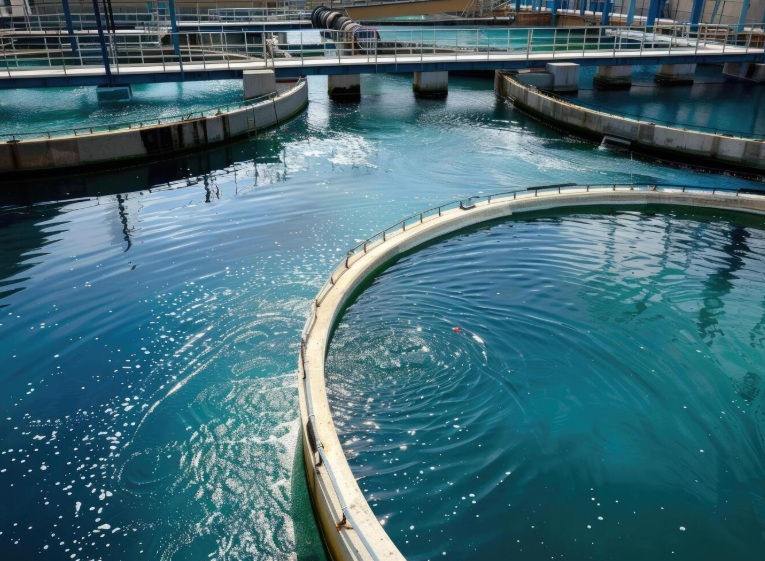
Created with AIPRM Prompt “Write Best Article to rank on Google”
Comprehensive Guide to Treatment Plants for Wastewater: A Crucial Step Towards a Sustainable Future
Introduction to Wastewater Treatment Plants
Wastewater treatment plants are essential infrastructures designed to purify and recycle wastewater from domestic, industrial, and commercial sources. These systems play a pivotal role in maintaining environmental sustainability, public health, and the water cycle. With rising concerns about water scarcity and pollution, effective wastewater treatment is no longer optional—it’s a necessity.
What is a Wastewater Treatment Plant?
A wastewater treatment plant (WWTP) is a facility that removes contaminants from wastewater or sewage and converts it into an effluent that can be safely released into the environment or reused. The treatment process involves a series of physical, chemical, and biological processes designed to eliminate harmful substances, pathogens, and solids from the wastewater.
Types of Wastewater Treatment Plants
1. Municipal Wastewater Treatment Plants
These plants handle sewage from residential and commercial areas. They are designed to treat large volumes of water and typically use a combination of primary, secondary, and tertiary treatment methods.
2. Industrial Wastewater Treatment Plants
These facilities are tailored to specific industries such as textile, pharmaceutical, food processing, and chemicals, where wastewater contains complex and hazardous substances. Specialized treatment technologies are used depending on the nature of the waste.
3. Effluent Treatment Plants (ETPs)
Primarily found in industries, ETPs treat effluent before discharging it into water bodies or municipal sewage systems. They are crucial in preventing toxic pollutants from contaminating the environment.
4. Sewage Treatment Plants (STPs)
STPs are focused on domestic sewage, which includes human waste and greywater. They are common in residential societies, hospitals, schools, and offices.
Key Stages in Wastewater Treatment
1. Preliminary Treatment
- Screening and Grit Removal: Removes large debris like plastic, rags, and sand.
- Flow Equalization: Balances variations in flow and pollutant loads.
2. Primary Treatment
- Sedimentation Tanks: Allow suspended solids to settle at the bottom, forming sludge.
- Removes about 60% of suspended solids and some organic matter.
3. Secondary Treatment
- Biological Treatment: Uses aerobic or anaerobic bacteria to decompose organic pollutants.
- Methods include:
- Activated Sludge Process
- Trickling Filters
- Rotating Biological Contactors
4. Tertiary Treatment
- Advanced Filtration: Involves sand filters, membrane bioreactors, or reverse osmosis.
- Chemical Treatment: Chlorination, ozonation, or UV disinfection.
- Targets residual nutrients, pathogens, and micropollutants.
Technologies Used in Modern Wastewater Treatment Plants
Membrane Bioreactor (MBR)
Combines biological treatment and membrane filtration, offering superior effluent quality and compact design.
Sequential Batch Reactor (SBR)
Treats wastewater in batches rather than continuously, suitable for small communities or industries.
Moving Bed Biofilm Reactor (MBBR)
Utilizes biofilm carriers in aeration tanks for efficient degradation of organic waste.
Reverse Osmosis (RO)
A high-end treatment that removes dissolved salts, heavy metals, and pathogens to produce potable-quality water.
Importance of Wastewater Treatment Plants
- Environmental Protection: Reduces water pollution, protects aquatic life, and maintains ecosystem balance.
- Public Health: Prevents the spread of waterborne diseases by removing pathogens.
- Water Conservation: Treated water can be reused for irrigation, industrial processes, and even potable use after advanced treatment.
- Regulatory Compliance: Helps industries and municipalities comply with local and international wastewater discharge norms.
Applications of Treated Wastewater
- Agricultural Irrigation
- Industrial Cooling Systems
- Urban Landscaping
- Groundwater Recharge
- Construction Site Applications
Challenges in Wastewater Treatment
1. High Operational Costs
Advanced treatment technologies require significant energy and maintenance, making cost optimization a priority.
2. Sludge Management
The disposal and treatment of sludge are complex and require specialized infrastructure and compliance protocols.
3. Emerging Contaminants
Modern pollutants such as microplastics, pharmaceuticals, and endocrine disruptors are difficult to detect and remove.
4. Infrastructure Gaps
In developing nations, the lack of adequate sewage infrastructure limits the effectiveness of centralized treatment systems.
Sustainable Wastewater Management Practices
- Decentralized Treatment Plants for rural and remote areas.
- Zero Liquid Discharge (ZLD) systems in industries to eliminate liquid waste.
- Smart Monitoring Systems using IoT and AI for predictive maintenance and real-time data analysis.
- Public-Private Partnerships (PPP) to enhance investment and technological innovation.
Regulatory Framework for Wastewater Treatment
Governments across the globe have laid down strict environmental laws for the discharge and treatment of wastewater. For instance:
- Environmental Protection Agency (EPA) standards in the USA
- Central Pollution Control Board (CPCB) guidelines in India
- European Union Water Framework Directive
Compliance not only avoids penalties but also promotes sustainable development.
Why Invest in a Wastewater Treatment Plant?
Whether you’re a municipality, an industrial unit, or a real estate developer, investing in a high-efficiency treatment plant for wastewater brings long-term benefits:
- Operational Efficiency
- Brand Reputation
- Environmental Stewardship
- Regulatory Approval
The return on investment (ROI) is realized through cost savings, water reuse, and compliance benefits.
Conclusion: The Way Forward
As global water resources continue to decline, the role of wastewater treatment plants becomes more critical. Leveraging advanced technologies, adopting sustainable practices, and ensuring regulatory compliance are key to making these plants not just functional but future-ready. Investing in wastewater treatment is investing in a cleaner, healthier, and more sustainable tomorrow.